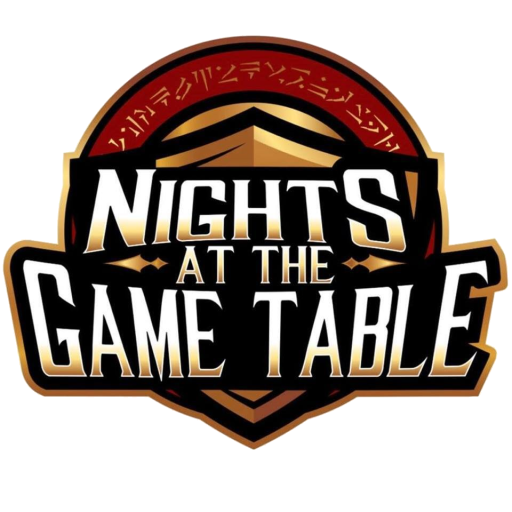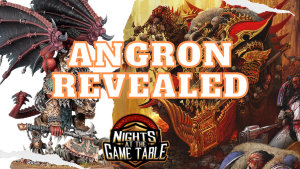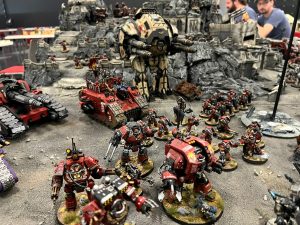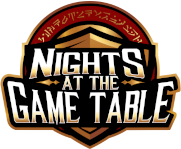Ah genestealer cult. The ultimate trickster army.
Hey guys! Matt Root here. Welcome to another of my articles, Matt’s Root Cause Analysis, where I look at competitive lists and tell you what you need to know about GT winning lists! Today, we’re going to go slightly off the rails and discuss a brand of list rather than a specific one: Genestealer Cult. There are tons of variants of GSC, so let’s hit the major strengths and weaknesses.
Strengths:
To understand the strength of GSC, you need to understand the essence of Warhammer 40k as a game. 40k is a tactics game, and as is the case with all tactics games, to be effective it requires you to have information: after all, how can you defeat that which you do not know?
This is where GSC has its strengths: it limits information for your opponent. This is an extremely big deal. The list relies heavily on deception, mind games, and tactical flexibility which allows you to react and control the flow of a game.

Let’s use an example: Many would say (and I am not one to disagree) that certain games are won or lost in the deployment phase. If you misdeploy against a shooty or assaulty army without protecting your characters or creating screens, you’ve lost before you’ve even started. A gunline guard army is going to screen against a fast moving ork horde, and, conversely, the ork player is going to deploy as efficiently as he can to be out of LOS of the guard’s guns while also minimizing distances between his punchy horde and the juicy units to be assaulted in the enemy’s army.
GSC just throws that all out the window.
GSC uses blips (their special deployment), so right off the bat, you have no idea where units are. Furthermore, the GSC player can massively adjust where the blips are, what goes in the blips, and how many blips there are. My list, for example, can adjust no less than 10 blips if I wanted to. That means that essentially you have ZERO information about how and where the opponent deploys. Thought you were in range of a blip? Oops. Not any more. Thought he didn’t deploy close enough to charge you on turn 1? Nah, now he can.

This continues for the whole game. GSC, through the use of stratagems, can put up to 3 units back into reserve on turn 1 that can then come in on ANY turn of the game (rather then by turn 3). This means that you can’t expect your opponent to spend all of his deep strikes by turn 3, rather, he can deep strike until the game itself is over.
GSC are also hard to screen against. They can show up, shoot a screen away, and then appear where the screen was through the use of stratagems. They have extremely reliable deep strike tricks, with often only 6” or 7” (or even lower) charges that are often reliable.
They also hit like a brick. Acolytes are a classic mainstay of the army. They hit akin to genestealers, with 2-3 rending attacks that are hitting on 2’s and wounding on 3s or 4s through the use of stratagems. A classic weapon to see on Acolytes are rocksaws, which are basically Ap-4 power fists that do 2 flat damage without the -1 to hit. This makes them brutally efficient at killing armored foes without an invul.

Aberrants trade the efficiency of acolytes for resilience. They appear fragile, but with a 5+ FNP and the ability to reduce damage, it takes more firepower than you’d expect to put these guys down. They have loads of attacks, can often swing twice, and one squad (with the right buffs) can put out 64x Str 6-7 attacks plus another 20x str 14 attacks. And they can swing all this twice. Also they can swing when they die.
The army makes heavy use of characters for buffs. Primuses allow the nearby GSC to hit on 2’s in combat. Patriarchs make nearby units fearless and hit like a truck. Clavmus add +1 to advances and charges. Nexos are a CP generator. Iconward is a 6+ FNP and with the use of stratagems allows nearby units to reroll to charge. Kellermorphs are character assassins (and damn good at it).
So this army can show up just about everywhere, break multiple mechanics of the game, hit like a truck, and is efficient in points. Yeesh.

Weaknesses: Ironically, the main weakness of GSC is in its trickery. It takes an EXTREMELY competent general to run this army efficiently; it is not forgiving of mistakes. For that reason, good, scary GSC generals are few and far between – for this reason alone, I wouldn’t call this army a gatekeeper.
The army is further nerfed by ITC missions. GSC sucks at ITC. It just does. It has serious trouble getting a kill on turn 1 (due to the deep strike nature of the army), so it starts at a disadvantage in points. It gives up the ITC secondary Reaper for basically free. It makes HEAVY use of characters (my list has like 9), so even with a 4+ Look out Sir! Ability, it still gives up Headhunter pretty easily. The patriarch HAS to be warlord, and with 6 wounds, that means that killing him means the max of 4 points of Kingslayer. (6 wounds = 3 points, warlord = 1 extra point). The army also gives up Butcher’s Bill fairly easily.

GSC can often dictate the rules of engagement with deep striking, but after that, they are ironically fairly slow. They only move 6” a turn, so once a unit is on the board, they have trouble getting anywhere. For this reason, GSC loooooves to hit a castle where all the juicy targets are packed tight.
The army is also stupidly fragile. Acolytes may hit like a truck but die to a wet fart. Characters are numerous but only T3, often with a 5+ save and no invul, and as such die easily (even with a 4+ Look out Sir). Aberrants are the toughest unit in the dex, but they’re only T4 with a 5+ armor and a 5+ FNP.
Tricks to be careful of: The thing to understand with GSC is that you know nothing, Jon Snow.
Some examples:
GSC have a stratagem much like cloud of flies for 2 CP on an infantry unit that they use in the shooting phase (as long as they are on a piece of terrain), so they can avoid shooting.
An acolyte flamer bomb can show up within 3-6” of your screen, shoot it with 20d6 flamers (avg of 70 hits), and smoke your screen BEFORE they place their next deep strike, so be warned that one layer of screens may not cut it.

Atalan Jackals can also show up 3” away from your screen and throw 5d6 Str 8 Ap-3 d3 damage bombs that are often hitting on 3s and wounding on 2’s. This will murder a ton of vehicles and cahracters. Watch for that.
The Kellermorph will straight up murder your characters. Ahriman, for example, will pop instantly to him. Remember that he can actually show up just outside of 3” of your screen, so you actually need to screen OVER 9” away from juicy characters, as the kellermorph has a range of 12”.
Remember that units on the board can go back into deepstrike for 1 CP (though only 1 unit a turn). GSC can also resurrect 1d6 troops for 1CP, so if you thought you killed the rocksaws in that squad, think again.
On turn 1, GSC can adjust a blip so its right on the edge of the deployment zone, then get a d6” move stratagem, then move and advance and charge through the use of powers. This gives them an effective range of 32” max for charges on turn 1. Don’t think you’re necessarily safe at 24” away.
Also, again: Assume nothing with deployment. In fact, I would just assume everything in a GSC army is going to deep strike in their deployment zone on turn 1. Blips mean nothing.

How to beat it: As I mentioned above, GSC sucks at ITC. Use that against them. Beat them in kills, max out your reaper and kill those characters.
Use turn 1 to create an ITC mission point advantage. GSC tends to do very little on turn 1, so do your best to earn a “Kill more” and “Hold more” for a free 4 points on turn 1.
Disrupt the synergy. GSC relies heavily on character support. Murder that and they become pretty meh. The patriarch in particular is a big deal to kill to get rid of that damn fearless bubble.
Disallow them targets. Remember GSC is pretty slow. After they deep strike, make them come to you – don’t give them free charges just because you think you can murder them in CC. GSC die to shooting like no one’s business.

I could go on and on (I already have) about the tricks of this army, but in the end, by far the best thing to do is to read the codex and play against the army. I’m serious. This is one of those armies that you need to playtest against just to see what it does. You will not get all the ins and outs of the army just by reading the book. Hell, I’ve been playing it for a couple months and I’m STILL learning tricks.
Hope this helps guys! As always, this is Matt Root as part of the Nights PRO to provide you with list breakdowns and tactics. If you’re looking for more info, all you do is contact me or Nick Nanavati on facebook or check out our facebook page.
See you next time on Matt’s Root Cause Analysis!
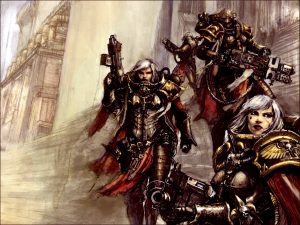
Warhammer 40k Winning Lists June 11th Edition
With summer in full swing, we see a refreshing number of tournaments kick back up globally, ranging from 3 to 7 rounds
